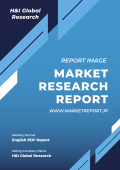1 Scope of the Report
1.1 Market Introduction
1.2 Years Considered
1.3 Research Objectives
1.4 Market Research Methodology
1.5 Research Process and Data Source
1.6 Economic Indicators
1.7 Currency Considered
1.8 Market Estimation Caveats
2 Executive Summary
2.1 World Market Overview
2.1.1 Global Methylene Bis (Butylthioglycolate) Annual Sales 2020-2031
2.1.2 World Current & Future Analysis for Methylene Bis (Butylthioglycolate) by Geographic Region, 2020, 2024 & 2031
2.1.3 World Current & Future Analysis for Methylene Bis (Butylthioglycolate) by Country/Region, 2020, 2024 & 2031
2.2 Methylene Bis (Butylthioglycolate) Segment by Type
2.2.1 Industrial Grade
2.2.2 Pharmaceutical Grade
2.3 Methylene Bis (Butylthioglycolate) Sales by Type
2.3.1 Global Methylene Bis (Butylthioglycolate) Sales Market Share by Type (2020-2025)
2.3.2 Global Methylene Bis (Butylthioglycolate) Revenue and Market Share by Type (2020-2025)
2.3.3 Global Methylene Bis (Butylthioglycolate) Sale Price by Type (2020-2025)
2.4 Methylene Bis (Butylthioglycolate) Segment by Application
2.4.1 Rubber
2.4.2 Plastic
2.4.3 Pharmaceutical
2.4.4 Others
2.5 Methylene Bis (Butylthioglycolate) Sales by Application
2.5.1 Global Methylene Bis (Butylthioglycolate) Sale Market Share by Application (2020-2025)
2.5.2 Global Methylene Bis (Butylthioglycolate) Revenue and Market Share by Application (2020-2025)
2.5.3 Global Methylene Bis (Butylthioglycolate) Sale Price by Application (2020-2025)
3 Global Methylene Bis (Butylthioglycolate) by Company
3.1 Global Methylene Bis (Butylthioglycolate) Breakdown Data by Company
3.1.1 Global Methylene Bis (Butylthioglycolate) Annual Sales by Company (2020-2025)
3.1.2 Global Methylene Bis (Butylthioglycolate) Sales Market Share by Company (2020-2025)
3.2 Global Methylene Bis (Butylthioglycolate) Annual Revenue by Company (2020-2025)
3.2.1 Global Methylene Bis (Butylthioglycolate) Revenue by Company (2020-2025)
3.2.2 Global Methylene Bis (Butylthioglycolate) Revenue Market Share by Company (2020-2025)
3.3 Global Methylene Bis (Butylthioglycolate) Sale Price by Company
3.4 Key Manufacturers Methylene Bis (Butylthioglycolate) Producing Area Distribution, Sales Area, Product Type
3.4.1 Key Manufacturers Methylene Bis (Butylthioglycolate) Product Location Distribution
3.4.2 Players Methylene Bis (Butylthioglycolate) Products Offered
3.5 Market Concentration Rate Analysis
3.5.1 Competition Landscape Analysis
3.5.2 Concentration Ratio (CR3, CR5 and CR10) & (2020-2025)
3.6 New Products and Potential Entrants
3.7 Mergers & Acquisitions, Expansion
4 World Historic Review for Methylene Bis (Butylthioglycolate) by Geographic Region
4.1 World Historic Methylene Bis (Butylthioglycolate) Market Size by Geographic Region (2020-2025)
4.1.1 Global Methylene Bis (Butylthioglycolate) Annual Sales by Geographic Region (2020-2025)
4.1.2 Global Methylene Bis (Butylthioglycolate) Annual Revenue by Geographic Region (2020-2025)
4.2 World Historic Methylene Bis (Butylthioglycolate) Market Size by Country/Region (2020-2025)
4.2.1 Global Methylene Bis (Butylthioglycolate) Annual Sales by Country/Region (2020-2025)
4.2.2 Global Methylene Bis (Butylthioglycolate) Annual Revenue by Country/Region (2020-2025)
4.3 Americas Methylene Bis (Butylthioglycolate) Sales Growth
4.4 APAC Methylene Bis (Butylthioglycolate) Sales Growth
4.5 Europe Methylene Bis (Butylthioglycolate) Sales Growth
4.6 Middle East & Africa Methylene Bis (Butylthioglycolate) Sales Growth
5 Americas
5.1 Americas Methylene Bis (Butylthioglycolate) Sales by Country
5.1.1 Americas Methylene Bis (Butylthioglycolate) Sales by Country (2020-2025)
5.1.2 Americas Methylene Bis (Butylthioglycolate) Revenue by Country (2020-2025)
5.2 Americas Methylene Bis (Butylthioglycolate) Sales by Type
5.3 Americas Methylene Bis (Butylthioglycolate) Sales by Application
5.4 United States
5.5 Canada
5.6 Mexico
5.7 Brazil
6 APAC
6.1 APAC Methylene Bis (Butylthioglycolate) Sales by Region
6.1.1 APAC Methylene Bis (Butylthioglycolate) Sales by Region (2020-2025)
6.1.2 APAC Methylene Bis (Butylthioglycolate) Revenue by Region (2020-2025)
6.2 APAC Methylene Bis (Butylthioglycolate) Sales by Type
6.3 APAC Methylene Bis (Butylthioglycolate) Sales by Application
6.4 China
6.5 Japan
6.6 South Korea
6.7 Southeast Asia
6.8 India
6.9 Australia
6.10 China Taiwan
7 Europe
7.1 Europe Methylene Bis (Butylthioglycolate) by Country
7.1.1 Europe Methylene Bis (Butylthioglycolate) Sales by Country (2020-2025)
7.1.2 Europe Methylene Bis (Butylthioglycolate) Revenue by Country (2020-2025)
7.2 Europe Methylene Bis (Butylthioglycolate) Sales by Type
7.3 Europe Methylene Bis (Butylthioglycolate) Sales by Application
7.4 Germany
7.5 France
7.6 UK
7.7 Italy
7.8 Russia
8 Middle East & Africa
8.1 Middle East & Africa Methylene Bis (Butylthioglycolate) by Country
8.1.1 Middle East & Africa Methylene Bis (Butylthioglycolate) Sales by Country (2020-2025)
8.1.2 Middle East & Africa Methylene Bis (Butylthioglycolate) Revenue by Country (2020-2025)
8.2 Middle East & Africa Methylene Bis (Butylthioglycolate) Sales by Type
8.3 Middle East & Africa Methylene Bis (Butylthioglycolate) Sales by Application
8.4 Egypt
8.5 South Africa
8.6 Israel
8.7 Turkey
8.8 GCC Countries
9 Market Drivers, Challenges and Trends
9.1 Market Drivers & Growth Opportunities
9.2 Market Challenges & Risks
9.3 Industry Trends
10 Manufacturing Cost Structure Analysis
10.1 Raw Material and Suppliers
10.2 Manufacturing Cost Structure Analysis of Methylene Bis (Butylthioglycolate)
10.3 Manufacturing Process Analysis of Methylene Bis (Butylthioglycolate)
10.4 Industry Chain Structure of Methylene Bis (Butylthioglycolate)
11 Marketing, Distributors and Customer
11.1 Sales Channel
11.1.1 Direct Channels
11.1.2 Indirect Channels
11.2 Methylene Bis (Butylthioglycolate) Distributors
11.3 Methylene Bis (Butylthioglycolate) Customer
12 World Forecast Review for Methylene Bis (Butylthioglycolate) by Geographic Region
12.1 Global Methylene Bis (Butylthioglycolate) Market Size Forecast by Region
12.1.1 Global Methylene Bis (Butylthioglycolate) Forecast by Region (2026-2031)
12.1.2 Global Methylene Bis (Butylthioglycolate) Annual Revenue Forecast by Region (2026-2031)
12.2 Americas Forecast by Country
12.3 APAC Forecast by Region
12.4 Europe Forecast by Country
12.5 Middle East & Africa Forecast by Country
12.6 Global Methylene Bis (Butylthioglycolate) Forecast by Type
12.7 Global Methylene Bis (Butylthioglycolate) Forecast by Application
13 Key Players Analysis
13.1 Lanxess
13.1.1 Lanxess Company Information
13.1.2 Lanxess Methylene Bis (Butylthioglycolate) Product Portfolios and Specifications
13.1.3 Lanxess Methylene Bis (Butylthioglycolate) Sales, Revenue, Price and Gross Margin (2020-2025)
13.1.4 Lanxess Main Business Overview
13.1.5 Lanxess Latest Developments
13.2 Osaka Organic Chemical
13.2.1 Osaka Organic Chemical Company Information
13.2.2 Osaka Organic Chemical Methylene Bis (Butylthioglycolate) Product Portfolios and Specifications
13.2.3 Osaka Organic Chemical Methylene Bis (Butylthioglycolate) Sales, Revenue, Price and Gross Margin (2020-2025)
13.2.4 Osaka Organic Chemical Main Business Overview
13.2.5 Osaka Organic Chemical Latest Developments
13.3 Bruno Bock Group
13.3.1 Bruno Bock Group Company Information
13.3.2 Bruno Bock Group Methylene Bis (Butylthioglycolate) Product Portfolios and Specifications
13.3.3 Bruno Bock Group Methylene Bis (Butylthioglycolate) Sales, Revenue, Price and Gross Margin (2020-2025)
13.3.4 Bruno Bock Group Main Business Overview
13.3.5 Bruno Bock Group Latest Developments
14 Research Findings and Conclusion
| ※参考情報 メチレンビス(ブチルチオグリコール酸)、略してMBTは、化学的に重要な有機化合物です。この化合物は、特にゴム産業や化学合成の分野において広く利用されています。以下では、MBTの定義、特徴、用途、関連技術などについて詳しく説明いたします。 まず、メチレンビス(ブチルチオグリコール酸)の定義についてですが、これはチオグリコール酸の誘導体であり、主にその特異な化学構造と反応性に基づいています。メチレンビス(ブチルチオグリコール酸)は、二つのブチルチオグリコール酸の分子がメチレン基(-CH₂-)を介して結合した構造を持ちます。この構造により、特定の化学反応を誘導する能力を有し、多様な用途での応用が可能となります。 次に、MBTの特徴について考えます。まず、MBTは、優れた反応性を持つ化合物であり、特定の化学反応を促進する触媒や試薬として広く使用されます。また、親水性と疎水性を併せ持つため、多くの溶媒と相互作用しやすく、その溶解性の高さが特徴の一つといえます。さらに、MBTは物理的性質においても柔軟性があり、熱安定性や酸化安定性も良好です。これにより、さまざまな環境条件下での利用が可能になるため、工業用途においても重要な役割を果たします。 種類に関しては、MBTにはいくつかの異性体や誘導体が存在します。これらは主にメチレン基に結合するブチル基の配置や、分子内の官能基の配置によって異なり、それぞれ異なる物理化学的性質を持つことがあります。このため、用途に応じて最適な種類を選ぶことができ、特定の反応や合成において優れた結果を得ることができます。 MBTの主な用途には、まずゴム産業における加硫剤としての活用があげられます。ゴム製品の製造過程において、MBTは加硫反応を促進し、ゴムの物理的特性を向上させる役割を果たしています。これにより、耐久性や弾力性が高まるため、タイヤ、靴底、ホースなどの製品において重要な役割を担っています。また、MBTはその特性を活かし、他の化合物との反応を介して新たな素材を創出するための基盤としても使われています。 さらに、MBTは農薬や防腐剤の製造においても利用されます。特に、農業においては、作物の生育を促進するための化学物質としての役割を果たします。これにより、農作物の収穫効率が向上し、安全な農産物の供給が実現されます。このように、MBTは化学産業全般において欠かせない存在であるといえます。 関連技術としては、MBTを用いた新しい合成法や反応プロセスの開発が挙げられます。研究者たちはMBTの特性を活かし、より効率的で環境に優しい化学合成を追求しています。これには、グリーンケミストリーの原則に則り、少ない資源で高い効率を実現するための手法や、新しい触媒の開発が含まれます。このような研究は、持続可能な化学産業への移行を促進し、環境保護に寄与することが期待されています。 以上のように、メチレンビス(ブチルチオグリコール酸)は、その特異な化学構造と多様な応用可能性により、化学産業において極めて重要な位置を占めています。今後も MBT に関する研究が進むことで、さらなる応用や新技術の開発が期待されます。これにより、MBTは新しい価値を生み出し続け、様々な分野での利用が拡大していくことでしょう。 |
*** 免責事項 ***
https://www.globalresearch.co.jp/disclaimer/











